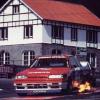Wanted Info On Front Mount For R33
Announcements
-
Similar Content
-
Latest Posts
-
Yucky. Things haven't gotten any better though. Now you have Emerson and Honeywell pushing these massive DCS/Scada things with proprietary hardware. They're not a PLC, they're not a computer, they're a...distibuted PLCish/DCSish monster of thing, that only they can program because they make the barriers to entry for anyone else so fricking high. And their developers are all located in the third/developing world (and India, in case anyone does not include that place in that category) and there are terrible failings of the ESl variety, of the care and common sense variety, and f**king forget about Functional Safety. Not a one of them has any idea what it means to comply with an IEC 615xx series standard.
-
All of the ECU grounds are to the chassis, the IGN grounds are to the cylinder head and i believe all the OEM body harness are left in original locations, im trying to work out if i can tell if the sensor voltage itself is losing any power to it from the very low ECU voltage. But yeah a manual pressure gauge will help in picking which path to actually chase. Also please dont bully my wiring plan i never designed it to be universally understood hopefully it still can make sense to you, im a wiring virgin. 1 thing i have just noticed the pressure sensor in question relays both pressure and temperature, the temperature reading holds nice and steady despite the low ecu voltage but the pressure reading is the one that jumps around alot so maybe it is really a pressure issue? wiring plan.xlsx
-
Gday, Due to not finding much up to date info on this topic I thought I'd make a thread to get peoples latest opinions/recommendations. Background info - I've got a S1.5 R33 GTST as a fun project car, mainly for street use and occasional drag strip, apart from all the cosmetic things I'll be doing a full rebuild of the engine with forged internals. Since it'll be getting new cams (kelford) and springs to match I thought I might as well get new lifters and valves while I'm at it, the dash says 160k KMs but the engine seems pretty tired, compression measures about 130psi across all cylinders so I'd like to freshen everything up. This is where I'm tempted to just fork out the extra and go solid lifters while it's all apart, aiming for 400-450kw atw with a flex tune. Assuming all supporting mods (oiling, fuel and all bolt ons) with a lightly ported head and turbo to match (yet to make a decision possibly gtx3582r or similar from Hypergear) I've seen the Tomei kits with just the buckets getting around, Supertech sells most things - Supertech High Performance Cam Followers | Trusted Racing Cam Followers Questions - Has anyone found the Hydraulic lifters to limit them at this power level? Is it usually found that you can just clean the stock lifters and find they work fine? Does going solid lifters save any headaches/issues with hydraulic lifters in the future? Any recommendations on other things that will need to be replaced, I know I'll need to get the solid profile cams but can you use the same type of valves and springs/retainers and is it recommended to change the guides and stem seals? Summary - Basically looking for pros/cons and wanna know if I'll actually need the extra RPMs from solid lifters or it'll just be bragging rights to say it ReVs OvEr 8000 Cheers
-
Ha ha ha, this stuff they had was installing Toshiba PLCs that were made some time in the 1990s, and they were replacing GEM80 PLCs. To let those two talk (staged upgrade along a ~1.2km long building that was split into 4 sections), was a bunch of WinXP machines running Java gateways... There was no way to put something like ProfiSafe in... Most of the HMI machines were WinXP, with Java program, with a custom button board emulating a keyboard... About the only buttons in the operator stations that went direct to the PLCs was the eStop. There was some interesting design stuff in that place...
-





Recommended Posts
Create an account or sign in to comment
You need to be a member in order to leave a comment
Create an account
Sign up for a new account in our community. It's easy!
Register a new accountSign in
Already have an account? Sign in here.
Sign In Now